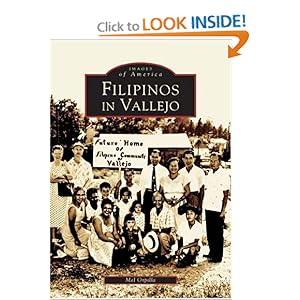Mel Orpilla
Island Warriors Martial Arts
2002 Columbus Parkway
Benicia, CA
mel9661
FANHS
The Filipino American National Historical Society ( FANHS) was established in 1986 to further the study, research, dissemination and education of Filipino American history. FANHS spearheaded the creation of October as Filipino American History Month in the United States. There are thirty Chapters across the country. For more information, please visit their website at www.fanhs-national.org.
Filipinos in Vallejo
I am a lifelong resident of Vallejo, CA. My father, Nazario, arrived in America in 1926. He first settled in SF and then moved permanently to Vallejo in 1932. In 2004, I authored a book, "Filipinos in Vallejo," published by Arcadia Publishing. You can buy a copy at the Vallejo Naval & Historical Museum or at Amazon.com.
Filipino American History
Morro Bay, CA
On October 18, 1587, the Spanish galleon La Nuestra Senora de Esperanza, dropped anchor in Morro Bay, California. Captain Pedro de Unamuno decided to explore the land and went on shore with twelve armed soldiers, Father Martin de Loyola and some “Luzon Indians.” The Luzon Indians were Filipino crew members who served as lookouts for the soldiers. On October 21,1995, the Filipino American National Historical Society (FANHS) placed a National Historical plaque at Coleman Park in Morro Bay to commemorate this historic event in Filipino American history.
Filipino Cajuns, Louisiana
In the mid 1800's, Filipino seamen who jumped ship in Vera Cruz, Mexico, were able to board ships bound for New Orleans, Louisiana. Once in New Orleans, they jumped ship yet again and fled to the bayous where they established the First permanent Filipino settlements in the United States. They called themselves Filipino Cajuns or “Manilamen.” They build their villages on stilts over the water just like in the Philippines and started on the first shrimping industries on the Gulf Coast. Their villages were in places such as St. Malo, Barataria Bay in Jefferson County, Alombro Canal, Camp Dewey, Bayou Cholas and Bassa Bassa.
Filipinos in Hawaii & Alaska
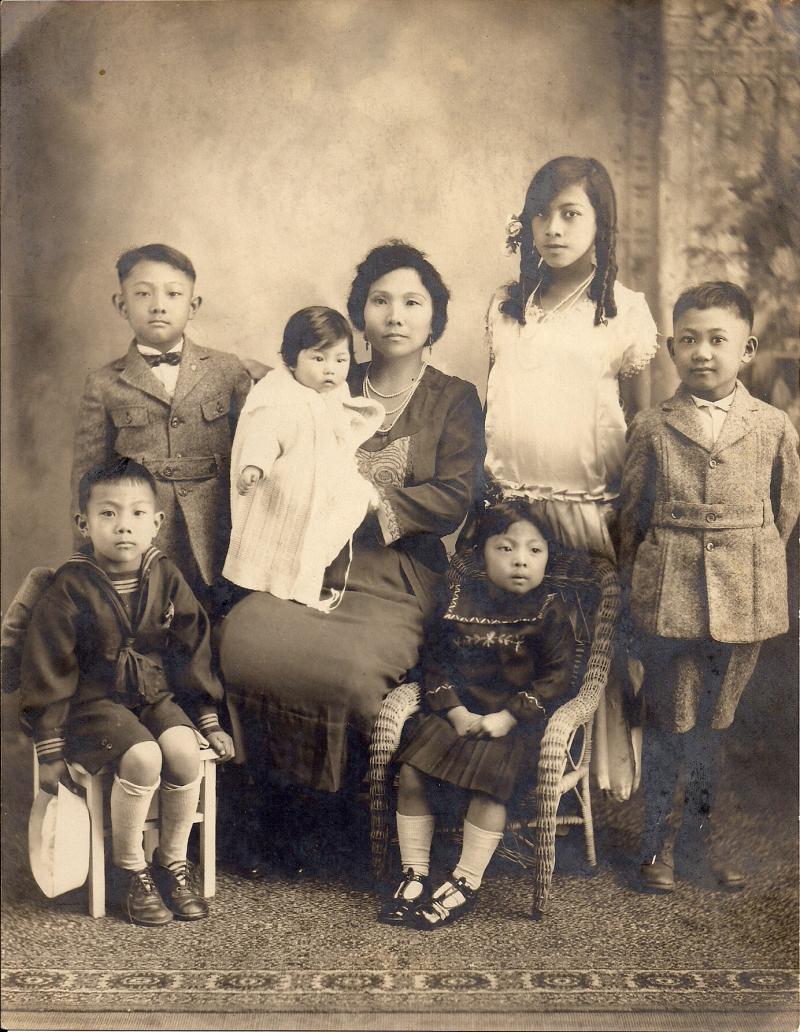
In December of 1906, the Hawaiian Sugarcane Planters Association recruited fifteen young Ilocanos to work in the sugarcane plantations of Hawaii. They offered them good wages, free passage and medical coverage. They arrived in Hawaii on December 20, 1906. They called themselves Sakadas. From 1906 – 1946, about 126,000 Filipinos were recruited to work in Hawaii.
Similarly, Filipino laborers made their way to Alaska via Seattle, Washington. They called themselves Alaskeros. They braved the cold weather, long work hours and harsh working conditions for big paychecks. They unloaded salmon from the ships, then transported them to the canneries for cleaning and processing. By 1930, nearly 45,000 Filipinos were working in Alaskas salmon canneries.
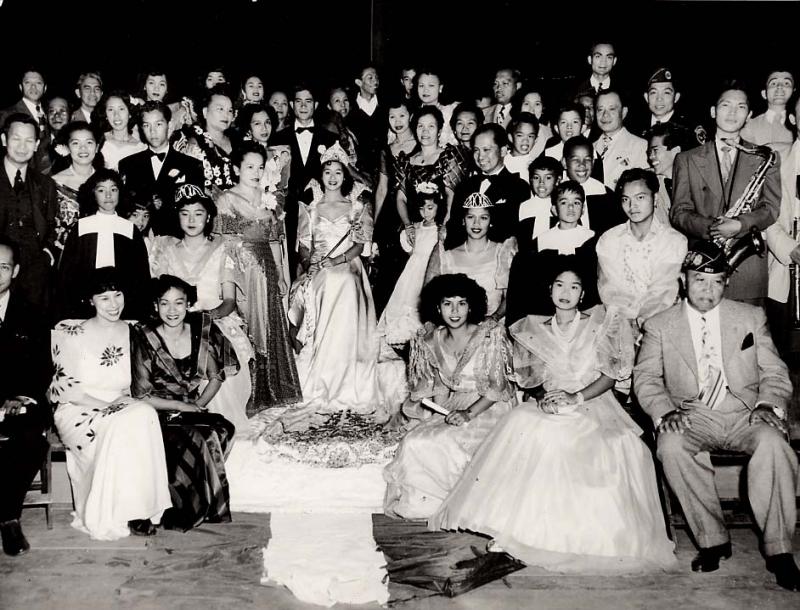
By far, the largest numbers of Filipinos settled on the West Coast of the United States from California to Washington state. They arrived in the ports of San Pedro and San Francisco in California and in Seattle, Washington. Today we refer to them as the Manongs, an Ilocano word for older brother but also a term of respect. Most were between the ages of sixteen and twenty-five years of age. They left their beloved homeland to find employment, education and adventure. What they found was an America that didn’t always welcome them with open-arms. They encountered racism left over from sentiments directed at the Chinese and Japanese. By the late 1920’s riots and violence against Filipinos were not uncommon. Most Filipinos worked “stoop labor” type jobs in the fields at a pay of as little as ten cents an hour. Laws forbid them from becoming US citizens, voting, owning property, and marrying Whites. In 1935, Congress passed the Tydings-McDiffie Act which restricted Filipino immigration to only 50 per year. By the 1940 Census, the Filipino population in the mainland US was 98,535.
Filipinos join the war effort
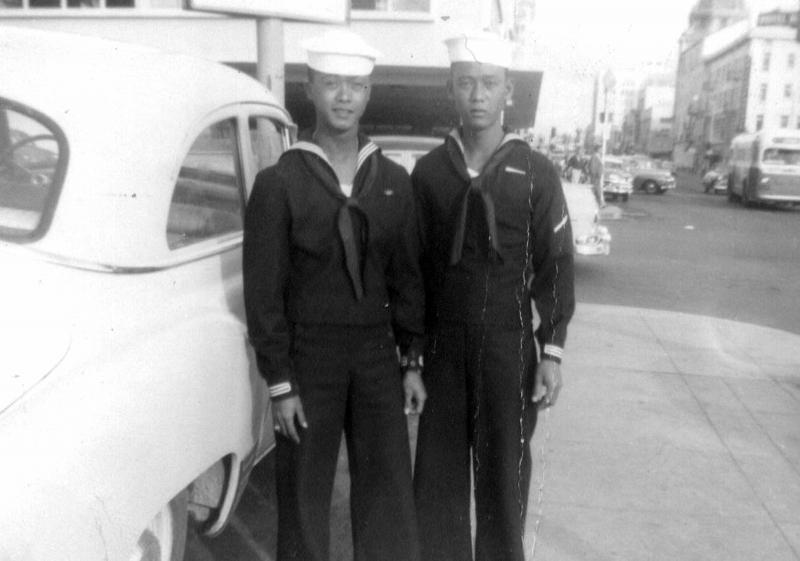 On December 7, 1941, Japan bombed Pearl Harbor and six hours later they also invaded the Philippines. President Franklin Roosevelt changed the Draft Law in 1942 to allow Filipinos to join the United States Armed Forces. On July 13, 1942, the First and Second Filipino Infantry Regiment of the US Army was activate with 143 officers, six warrant officers and 3,019 enlisted men. They trained at Camp San Luis Obispo on the central California coast. To accommodate all the thousands of recruits, the Second Filipino Infantry Regiment was activated on November 21, 1942. More than 7,000 Filipinos served in the two Regiments. Not to be forgotten are the thousands of men who served in the US Navy as stewards to Naval officers or in the galleys of Naval bases and ships. Their service will always be remembered.
On December 7, 1941, Japan bombed Pearl Harbor and six hours later they also invaded the Philippines. President Franklin Roosevelt changed the Draft Law in 1942 to allow Filipinos to join the United States Armed Forces. On July 13, 1942, the First and Second Filipino Infantry Regiment of the US Army was activate with 143 officers, six warrant officers and 3,019 enlisted men. They trained at Camp San Luis Obispo on the central California coast. To accommodate all the thousands of recruits, the Second Filipino Infantry Regiment was activated on November 21, 1942. More than 7,000 Filipinos served in the two Regiments. Not to be forgotten are the thousands of men who served in the US Navy as stewards to Naval officers or in the galleys of Naval bases and ships. Their service will always be remembered.
War Brides help grow communities
By 1945 the United States raised the quotas of Filipinos allowed to immigrate to one hundred per year. However, Filipinos arrived under non-quota status thanks to the War Brides Act of 1945. The brides and children of Filipino servicemen who became US citizens were allowed entry into the United States. These Filipinas became the catalyst for the huge growth of the Filipino community after WWII in cities and towns along the West Coast. Once families were established in the various localities, they formed the foundation of what we now know as the Filipino communities in Seattle, Vallejo, Salinas, Portland, Alameda and many other towns. The proliferation of organizations, fraternities such as the Caballeros de Dimas Alang and the Legionarios Del Trabajo, religious groups and youth sports teams, brought Filipinos together for huge celebrations and festivities. Economically, many Filipino veterans of WWII found jobs as civilians in military installations enabling them to buy homes settle down and raise families.
Immigration Act of 1965
On October 3, 1965, Congress passed the Immigration and Nationality Act of 1965. It opened up a new era of Filipino immigration when the quotas were lifted to allow 20,000 Filipinos per year entry into the United States. The Philippines called this the “Brain Drain” because their finest , most educated citizens were leaving to come to America to find a better and more prosperous life for themselves and their families. More than half of those initially arriving were Filipino nurses and other medical personnel. After Mrtial Law was declared in 1972, even more Filipinos left the Philippines to escape the Marcos Dictatorship. By 1970, the Filipino population in the United States was 343,060. Most had jobs in contrast to the Manongs who arrived in the 1920’s and 30’s. They were nurses, doctors, engineers, accountants, teachers, and business people.
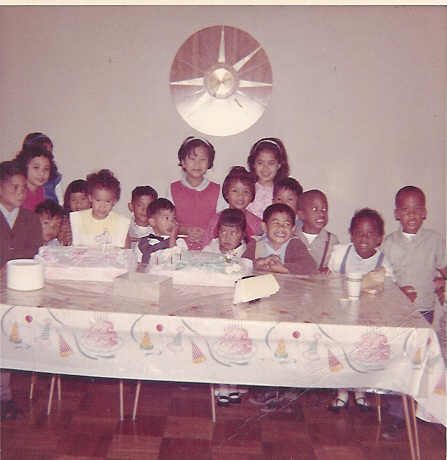
Filipinos the second largest Asian group in the US
Today, Filipinos constitute the second-largest Asian population in the United States. According to the 2010 US Census, there are currently 2,555,923, living in the United States. They largest concentration is in California, followed by Hawaii, Texas and Washington state. Filipinos have made their mark in politics, education, the military, Hollywood, television, and sports. They are an integral part of the fabric of multi-cultural America. Filipino American history continues to be made every single day. The future of Filipinos in America lies with the young who have never set foot in the homeland of their ancestors, yet whose identity is strongly tied to the Philippines. They will combine the best of their Filipino heritage and values with the comfort and familiarity of their American upbringing to pave the way for future generations of Filipinos in America.
Island Warriors Martial Arts
2002 Columbus Parkway
Benicia, CA
mel9661
